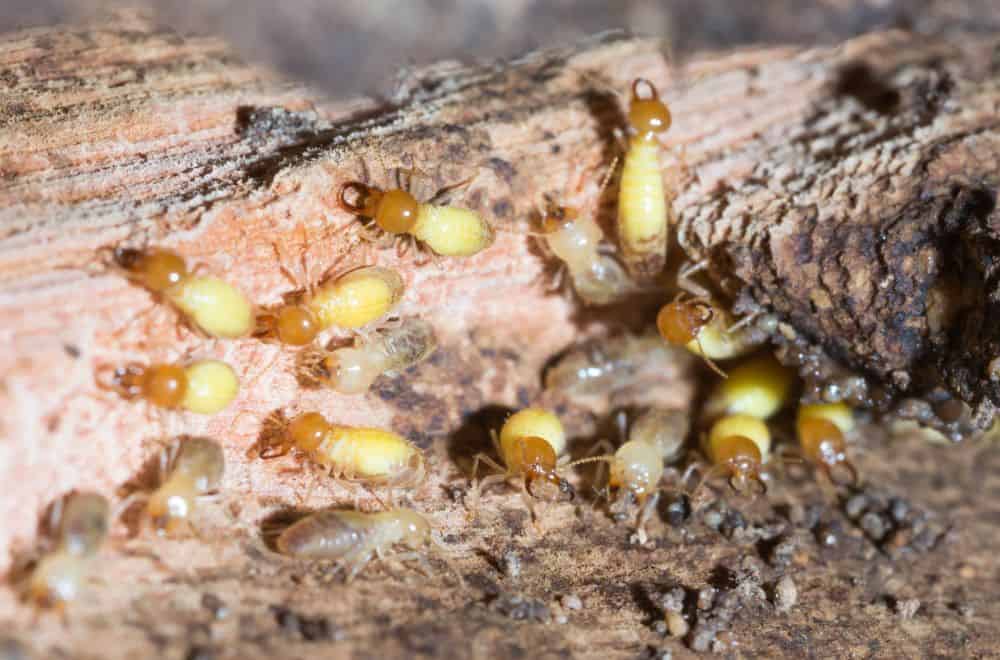Most homeowners know about the perils of a termite incursion, and detecting termites in your house can be the start of a nightmare infestation.
For this reason, it’s important to take action as early as possible upon detecting termites, but some people are less willing to use potentially toxic pesticides to deal with the problem.
As a result, they might turn to alternative, more natural treatments, and one idea is to rely on ants to deal with the invasion.
But is this an effective option? Can ants help deal with a termite nest in your home?
To help you understand everything you need to know about this topic, in this post, we answer the question, do ants eat termites?
What’s the difference between ants and termites?
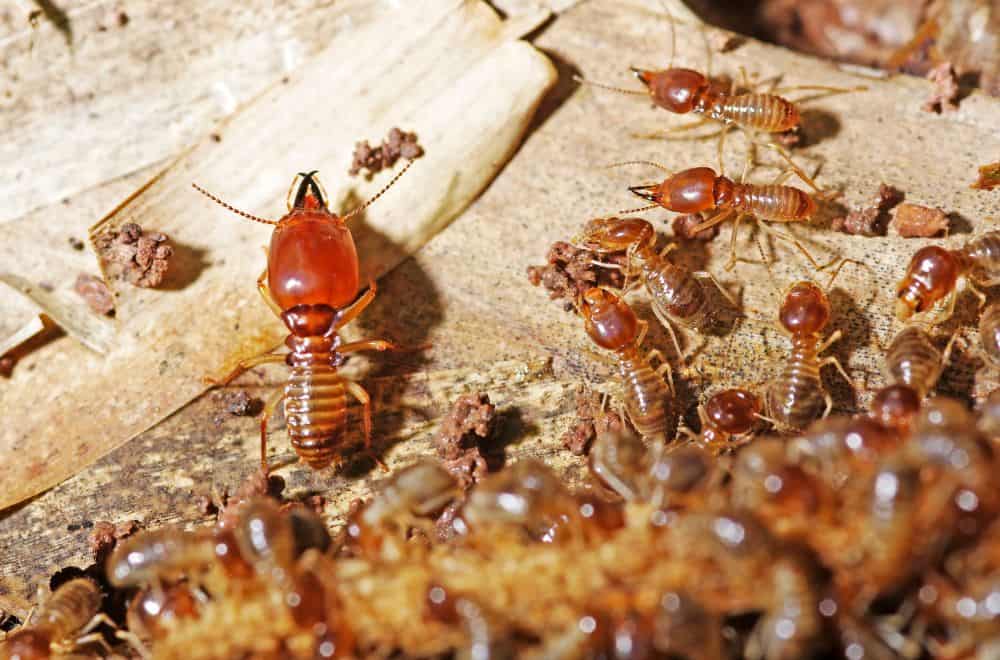
Before we talk about whether ants eat termites, let’s say a few words about the differences between the two species.
Some people might imagine that ants and termites are more or less the same since they are about the same size, look quite similar and appear to have similar habits and habitats.
However, although they may have some superficial similarities, the two species are only distantly related.
Termites and ants are both what are known as eusocial insects, which means they live in organized colonies that include specific castes like soldiers and workers that have different jobs.
However, while ants are most closely related to wasps and bees, termites’ closest relatives are the cockroaches.
Termite colonies are built around a reproductive pair, a “king” and a “queen” who remain together for life and are responsible for producing all the other termites in the nest.
Termites feed on decaying plant matter, which, depending on the species, may include leaf litter or – more importantly for the purposes of this post – wood.
Ant colonies are organized in a similar way but have just a queen and no king.
There are many different species of ant, and there is much variation between them, but to simplify things greatly, in ant society, workers bring in food and carry out other tasks while soldiers protect the nest.
Among the thousands of species of ants, many eat other bugs. However, while carpenter ants may burrow into wood to make nests, no species of ants eat wood.
So do ants eat termites?
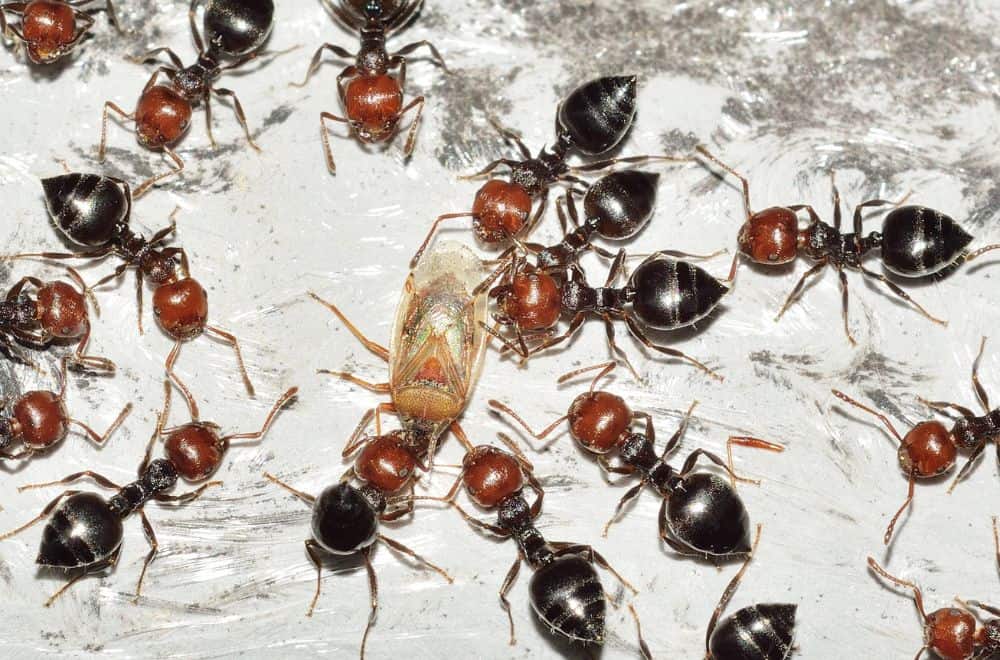
In a word, yes.
Termites are tasty and nutritious protein snacks for many species of ants, and when they can get them, termites are among ants’ favorite items on the menu.
However, a worker or soldier ant doesn’t simply capture a termite and start munching away on it there and then.
Adult ants carry termites back to the nest and feed them to the larvae as well as to the other adults, including the queen – although the exact details of how this works may vary from one species to another.
Can ants help keep termites at bay?
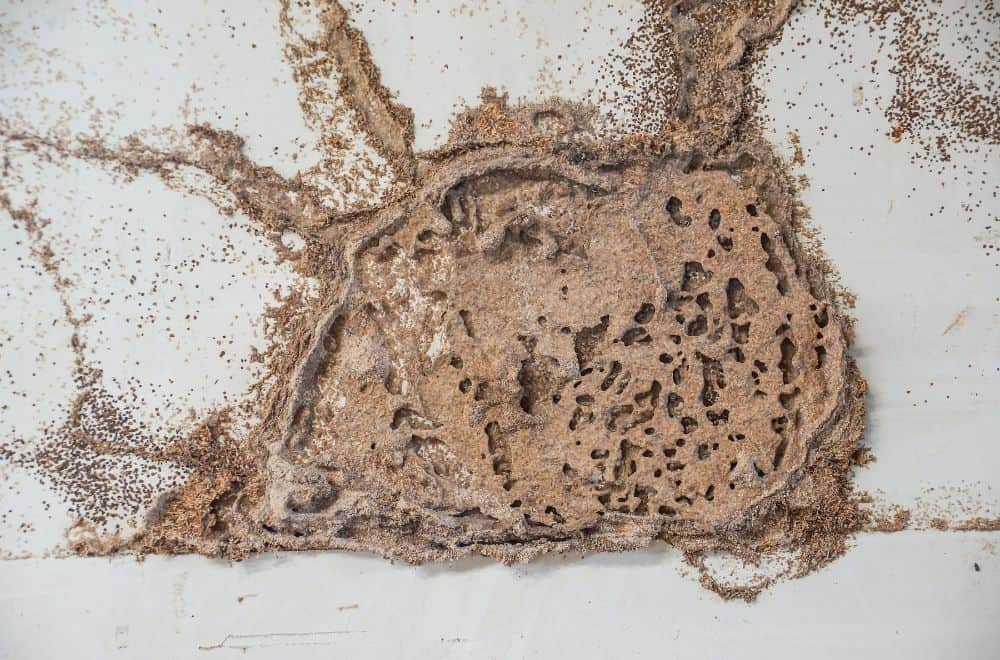
So if ants enjoy making a meal of any termites they find, they must be a good natural way to eradicate termite infestations, right?
Wrong.
First, ants can’t access termite nests easily. The nests have hard outer shells and few entrances the ants can crawl through.
Termite nests have ventilation shafts that are created to control the temperature of the nest, and attacking ants can potentially enter a termite nest that way.
However, these access tunnels are heavily guarded by soldier termites, so to get in that way, the ants will need to be ready for a fight.
Sometimes worker termites venture outside in search of food, and the tunnels they use can also present possible entrances for ants – but they too are similarly guarded by termite sentries.
Ants may sometimes raid termite nests through these access points, or sometimes they may attack if the nest is disturbed and opened up by larger animals or humans.
However, they face fierce battles when entering termite nests, so it’s not something they choose to do all the time – which means they are not effective at controlling termite populations.
Ants don’t exhaust their food supply
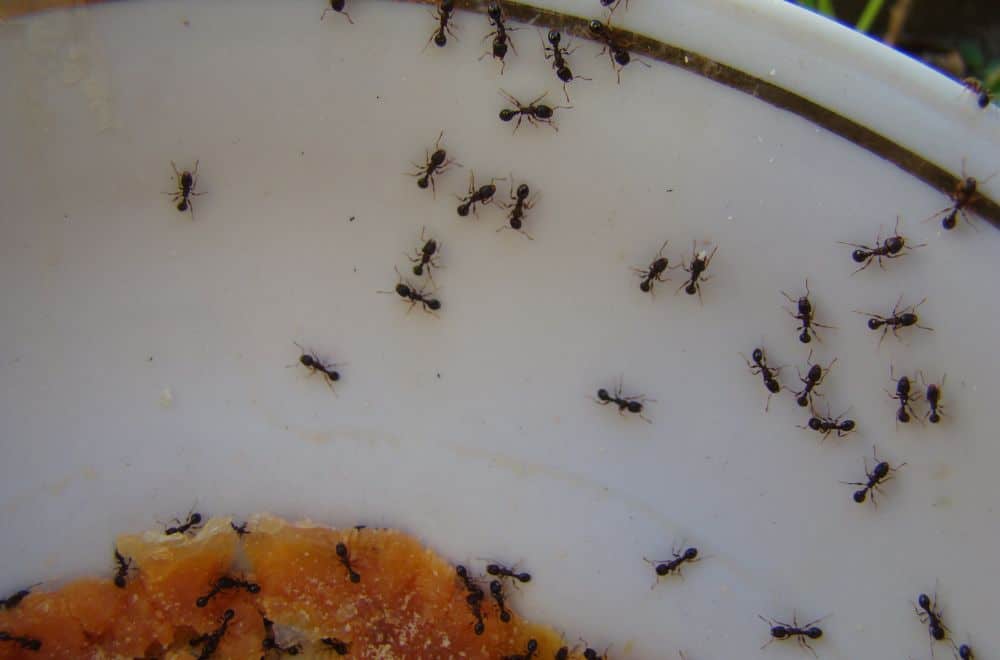
Another reason ants are not effective at exterminating termite infestations is that they seem to prefer to preserve such a plentiful food supply.
It’s not that they make a conscious decision to not eat all the termites, but somehow, the ants seem to know that if they only take the termites they need, more will replace them, providing them with a never-ending feast.
This is why, although ants may help keep the termite population under control in a small way by taking a few individuals, they will never march into a termite nest en masse and carry off every individual they find there.
As a result, although you may have ants on your property, it doesn’t mean termites can’t cohabit with them – and that means, unfortunately, ants can’t be seen as an effective means of controlling a termite infestation on your property.
What can you do if you have a termite infestation?
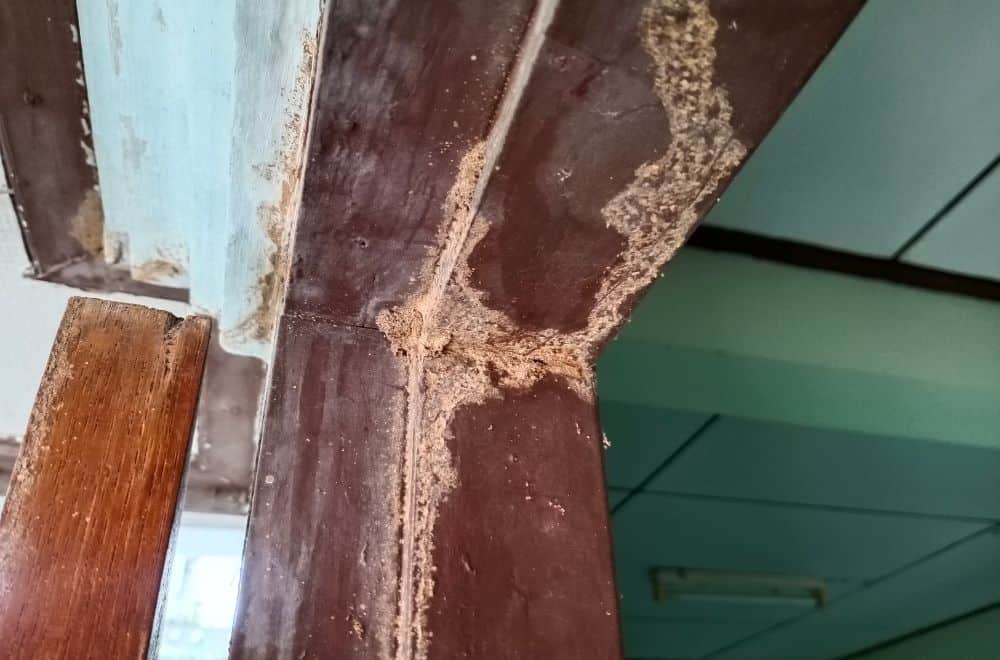
As most people who live in areas where termites exist will be well aware, having a termite infestation in your home can be a serious problem.
Certain species just love to dine on wood, and if left unchecked, they can even compromise the structural integrity of your property if important parts of the building are made of wood.
If you want to try to deal with the termites yourself, you can try setting up termite traps with poisoned bait.
The termites will be attracted to these, and they will take the food back to the nest where it will kill all the termites there that eat it.
Alternatively, you can spray a termiticide into the nest and areas where termites are feeding to try to kill them more directly.
However, if the infestation is already well established when you notice it, you may need to call in an exterminator.
In any case, once you see termites in your home, you shouldn’t delay because termite infestations can cause serious and expensive damage to your house.
How can you tell if you have termites?
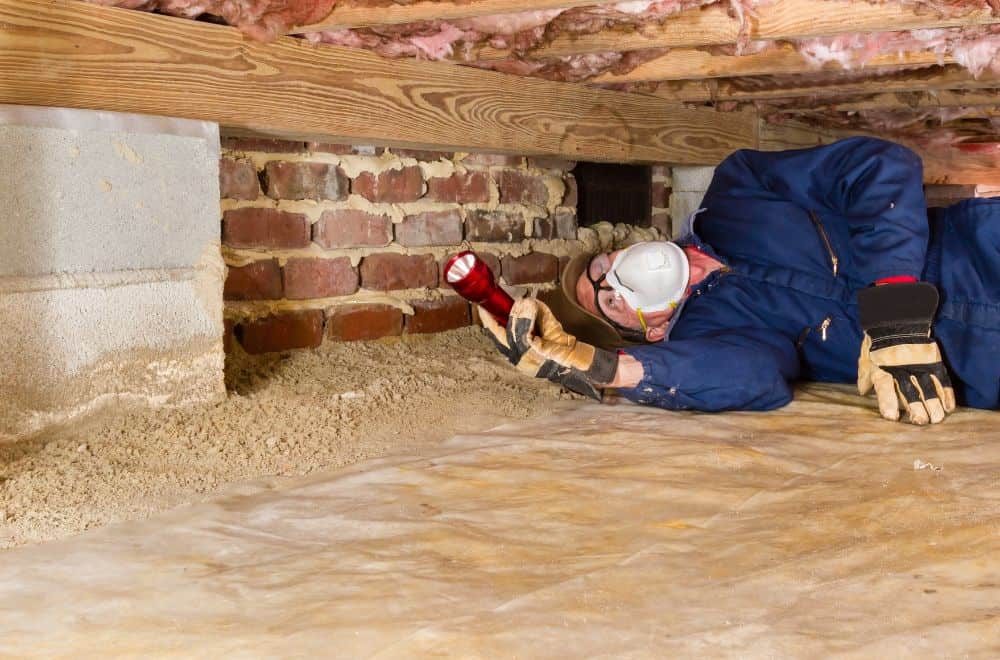
So what are the signs of a termite infestation?
Unlike ants, which you will see marching in long lines in search of food, you are less likely to see termites out in the open.
However, there are some tell-tale signs you should be aware of.
-
Tiny holes in wood
One of the first and most obvious signs you’ll notice is tiny holes in the wood in your home. These may be due to various types of woodworm, or carpenter ants may be to blame – but often, they are caused by termites burrowing into the wood for food and to make a nest.
-
Mud tubes
Termites create mud tubes as they excavate the wood, and these are clear signs you have a big problem. There’s no mistaking a termite mud tube, and if you see one, it means the infestation is already well-developed.
However, bear in mind that these tubes can last a long time once they’re created, so if you see one in an area that you rarely visit (like an outdoor shed), it may already be very old and the termites may even have already left.
-
Dust
Termite dust, a combination of wall dirt, wood shavings and termite droppings, may collect at the base of your walls. It might not be easy to spot, especially if you vacuum your floors frequently, but it’s a sign to look out for.
-
Damaged wood trim
More obvious will be if you see the wood trim around the base of your walls is damaged. If you look closely, you may even be able to see white lines that can tell you that termites have made tunnels inside the wood.
Wood paneling may also be attacked in a similar manner, and this kind of visible wood may tell you that other wood you can’t see is also similarly infected.
-
Hollow-sounding wall
If you tap on your wall, an unusual hollow sound may indicate that termites have tunneled extensively inside the wood there. Try tapping on several sections of the wall to see if the other sections sound different and also how extensive the tunneling might be.
-
Bubbling or flaking wallpaper
Termites take moisture into the walls with them, and the result could be the appearance of bubbling or flaking wallpaper.
-
Shifted foundations
In the most serious cases, termite damage may even cause a building to shift on its foundations. If you think you notice any signs of this, you should call in an exterminator immediately – and maybe even a building professional to evaluate the safety of your home.
What other animals eat termites?

Ants aren’t the only creatures that like to snack on termites. Moles and other rodents might be considered pests, but when it comes to termites, they’re your friends since they love to eat these invasive little pests.
However, moles are more help against subterranean species of termites rather than the ones that like to make their nests in your walls!
Many species of birds, reptiles like lizards and snakes and amphibians including frogs are also partial to termites. However, again, these aren’t going to help much in your home.
Among the larger mammals, anteaters will happily devour termites, despite their name, and of the animals you’re likely to come across in North America, skunks will also eat termites if they find them, although they’re not one of skunks’ main food sources.
Ants eat termites – but they’re not the solution you need
So as we’ve seen, the answer to our first question is yes, ants do eat termites.
However, ants won’t invade a termite nest to massacre all the termites inside, so the answer to the more important question of whether ants can help control a termite infestation is no, unfortunately, they can’t.
